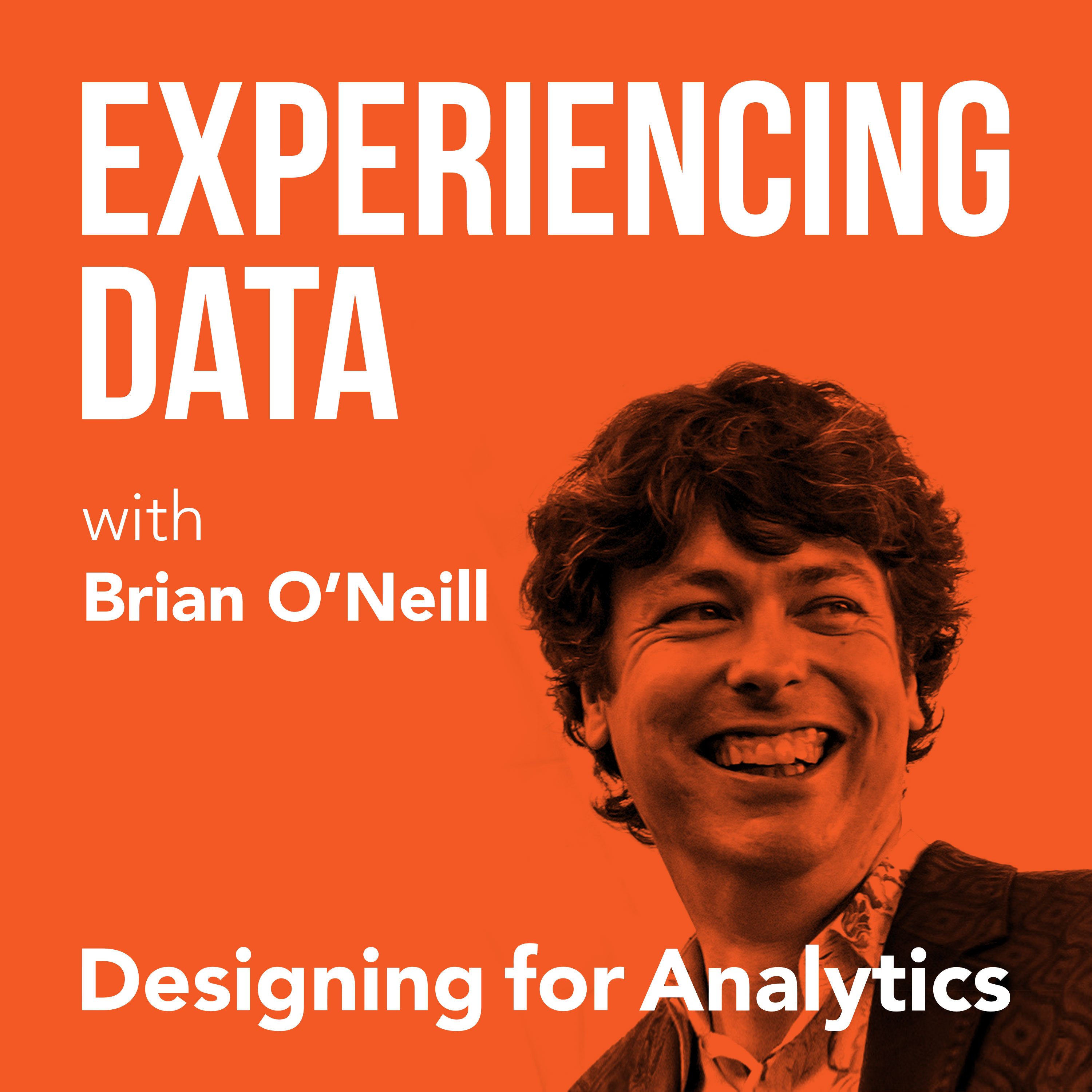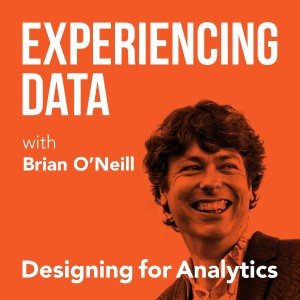

136.1K
Downloads
168
Episodes
Is the value of your enterprise analytics SAAS or AI product not obvious through it’s UI/UX? Got the data and ML models right...but user adoption of your dashboards and UI isn’t what you hoped it would be? While it is easier than ever to create AI and analytics solutions from a technology perspective, do you find as a founder or product leader that getting users to use and buyers to buy seems harder than it should be? If you lead an internal enterprise data team, have you heard that a ”data product” approach can help—but you’re concerned it’s all hype? My name is Brian T. O’Neill, and on Experiencing Data—one of the top 2% of podcasts in the world—I share the stories of leaders who are leveraging product and UX design to make SAAS analytics, AI applications, and internal data products indispensable to their customers. After all, you can’t create business value with data if the humans in the loop can’t or won’t use your solutions. Every 2 weeks, I release interviews with experts and impressive people I’ve met who are doing interesting work at the intersection of enterprise software product management, UX design, AI and analytics—work that you need to hear about and from whom I hope you can borrow strategies. I also occasionally record solo episodes on applying UI/UX design strategies to data products—so you and your team can unlock financial value by making your users’ and customers’ lives better. Hashtag: #ExperiencingData. JOIN MY INSIGHTS LIST FOR 1-PAGE EPISODE SUMMARIES, TRANSCRIPTS, AND FREE UX STRATEGY TIPS https://designingforanalytics.com/ed ABOUT THE HOST, BRIAN T. O’NEILL: https://designingforanalytics.com/bio/
Episodes

Tuesday Mar 23, 2021
Tuesday Mar 23, 2021
Marty Cagan has had a storied career working as a product executive. With a resume that includes Vice President of Product at Netscape and Ebay, Marty is an expert in product management and strategy.
This week, Marty joins me on Experiencing Data to talk more about what a successful data product team looks like, as well as the characteristics of an effective product manager. We also explored the idea of product management applied to internal data teams. Marty and I didn’t necessarily agree on everything in this conversation, but I loved his relentless focus on companies’ customers. Marty and I also talked a bit about his new book, Empowered: Ordinary People, Extraordinary Teams. I also spoke with Marty about:
- The responsibilities of a data product team. (0:59)
- Whether an internally-facing software solution can be considered a 'product.' (5:02)
- Customer-facing vs. customer-enabling: Why Marty tries hard not to confuse the terminology of internal employees as customers. (7:50)
- The common personality characteristics and skill sets of effective product managers. (12:53)
- The importance of 'customer exposure time.' (17:56)
- The role of product managers in upholding ethical standards. (24:57)
- The value of a good designer on a product team. (28:07)
- Why Marty decided to write his latest book, Empowered, about leadership. (30:52)
Quotes from Today’s Episode
We try hard not to confuse customers with internal employees — for example, a sales organization, or customer service organization. They are important partners, but when a company starts to confuse these internal organizations with real customers, all kinds of bad things happen — especially to the real customer. [...] A lot of data reporting teams are, in most companies, being crushed with requests. So, how do you decide what to prioritize? Well, a product strategy should help with that and leadership should help with that. But, fundamentally, the actual true customers are going to drive a lot of what we need to do. It’s important that we keep that in mind. - Marty (9:13)
I come out of the technology space, and, for me, the worlds of product design and product management are two overlapping circles. Some people fall in the middle, some people are a little bit heavier to one side or the other. The focus there is there’s a lot of focus on empathy, and a focus on understanding how to frame the problem correctly — it’s about not jumping to a solution immediately without really understanding the customer pain point. - Brian (10:47)
One thing I’ve seen frequently throughout my career is that designers often have no idea how the business sustains itself. They don’t understand how it makes money, they don’t understand how it’s even sold or marketed. They are relentlessly focused on user experience, but the other half of it is making a business viable. - Brian (14:57)
Ethical issues really do, in almost all cases I see, originate with the leaders. However, it’s also true that they can first manifest themselves in the product teams. The product manager is often the first one to see that this could be a problem, even when it’s totally unintentional. - Marty (26:45)
My interest has always been product teams because every good product I know came from a product team. Literally — it is a combination of product design and engineering that generate great products. I’m interested in the nature of that collaboration and in nurturing the dynamics of a healthy team. To me, having strong engineering that’s all engaged with direct customer access is fundamental. Similarly, a professional designer is important — somebody that really understands service design, interaction design, visual design, and the user research behind it. The designer role is responsible for getting inside the heads of the users. This is hard. And it’s one of those things, when it’s done well, nobody even notices it. - Marty (28:54)
Links Referenced
- Silicon Valley Product Group: https://svpg.com/
- Empowered: https://svpg.com/empowered-ordinary-people-extraordinary-products/
- Inspired: https://svpg.com/inspired-how-to-create-products-customers-love/
- Twitter: https://twitter.com/cagan
LinkedIn: https://www.linkedin.com/in/cagan/
Comments (0)
To leave or reply to comments, please download free Podbean or
No Comments
To leave or reply to comments,
please download free Podbean App.